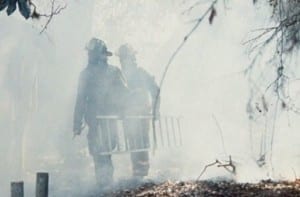Under the Microscope with Forensic Science
 The UCF community has its very own forensic science center, but it’s not all dimly lit labs and high-speed car chases. Forensic scientists from around the world frequently gather together at the National Center for Forensic Science (NCFS), located on Research Parkway, to conduct their research.
The UCF community has its very own forensic science center, but it’s not all dimly lit labs and high-speed car chases. Forensic scientists from around the world frequently gather together at the National Center for Forensic Science (NCFS), located on Research Parkway, to conduct their research.
Nov. 2 – 4, a meeting was held for fire debris analysts from the U.S. and Canada at the NCFS. Comprising the Ignitable Liquids Reference Collection (ILRC), the committee reviewed results from an ongoing grant from the National Institute of Justice and made recommendations for the analysis of weathered and degraded samples.
The ILRC is a database of ignitable liquids developed by NCFS and used by fire debris analysts investigating possible arson cases around the world. Hundreds of liquids are classified and searchable through the database.
The NCFS, a UCF research center, is addressing the complications introduced by weathering and degradation. Ignitable liquids, such as gasoline, evaporate when exposed to the heat of a fire. The presence of microbes in the fire debris can lead to preferential degradation of some ignitable liquid components.
Both processes make an already difficult job even more complicated. Along with addressing such complications, the NCFS is working to expand the ILRC database to assist analysts in evaluating fire debris samples.
The center collects and studies physical evidence such as ignitable liquids, explosives, and fiber evidence. Among the research they conduct is the analysis of gunshot residue.
Earlier this year, 23 forensic examiners with a wide array of knowledge in the analysis of gunshot residue gathered at a meeting hosted by the NCFS.
These 23 forensic analysts comprise the Scientific Working Group for Gunshot Residue (SWGGSR), representing six countries from three different continents.
According to the website, SWGGSR aims “to make recommendations for internationally accepted guidelines for the forensic examination of gunshot residues.”
Having a set of established standards and protocols is extremely important in the world of forensic science. Many forensic science disciplines like fire, explosives, DNA, etc. have scientific working groups composed of academics as well as analysts who work with operational laboratories to develop and maintain such standards.
According to UCF chemistry professor and director of the NCFS, Michael Sigman, the established standards and protocols play a big role in the identification of gunshot residue.
When a gun is fired, material from the primer and residue from the gunpowder may be left behind on the shooter’s hands, on innocent bystanders, and on the victim. The physical appearance and chemical signature of gunshot residue can assist forensic analysts in identifying the shooter, the type of ammunition used, and in determining the distance from the shooter to the victim.
Standards and protocols are critical in the forensic industry and they must change to keep up with changes in ammunition and new scientific methods that become available to the industry.
